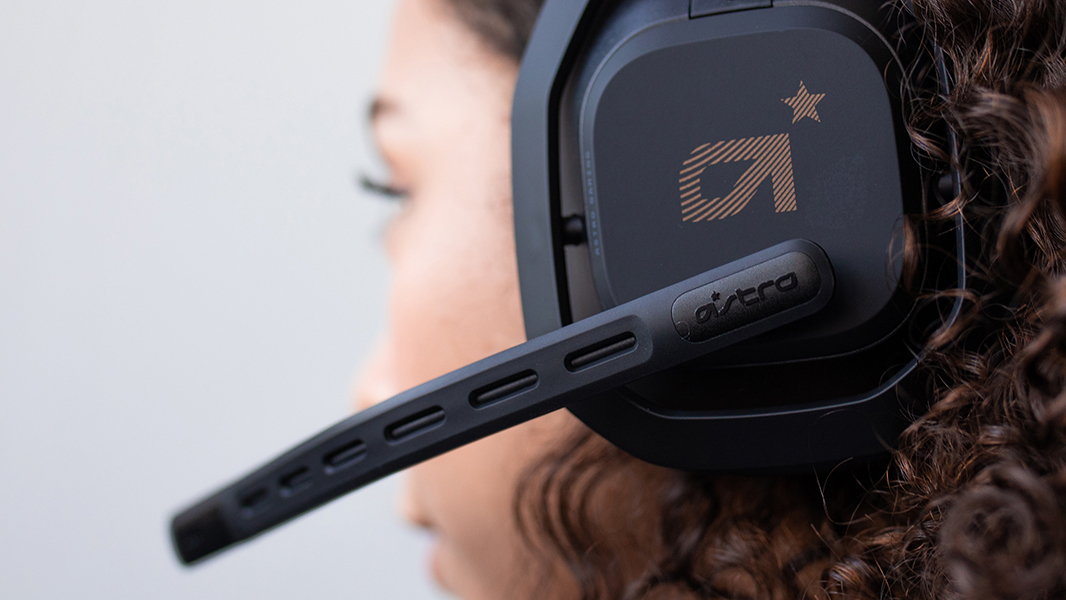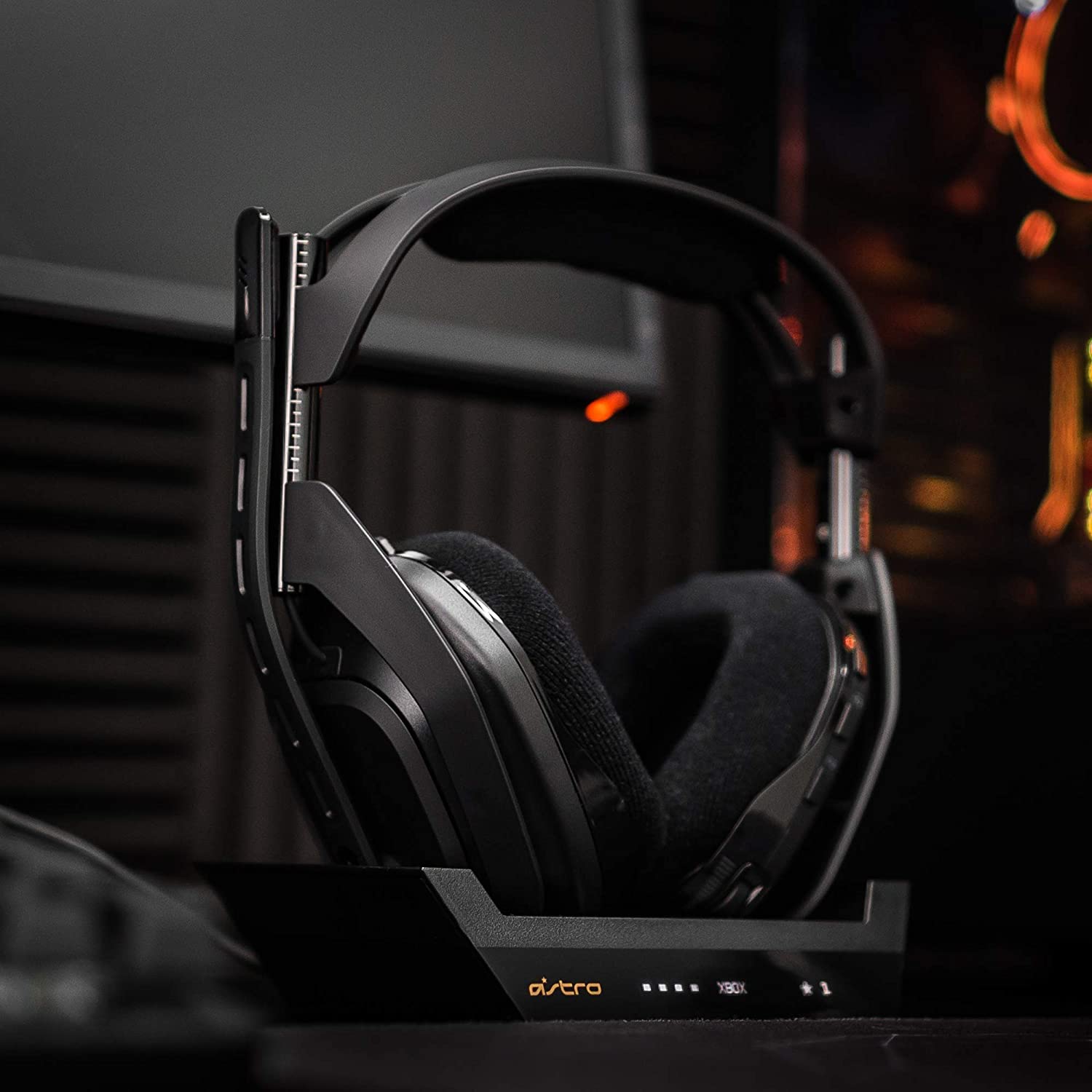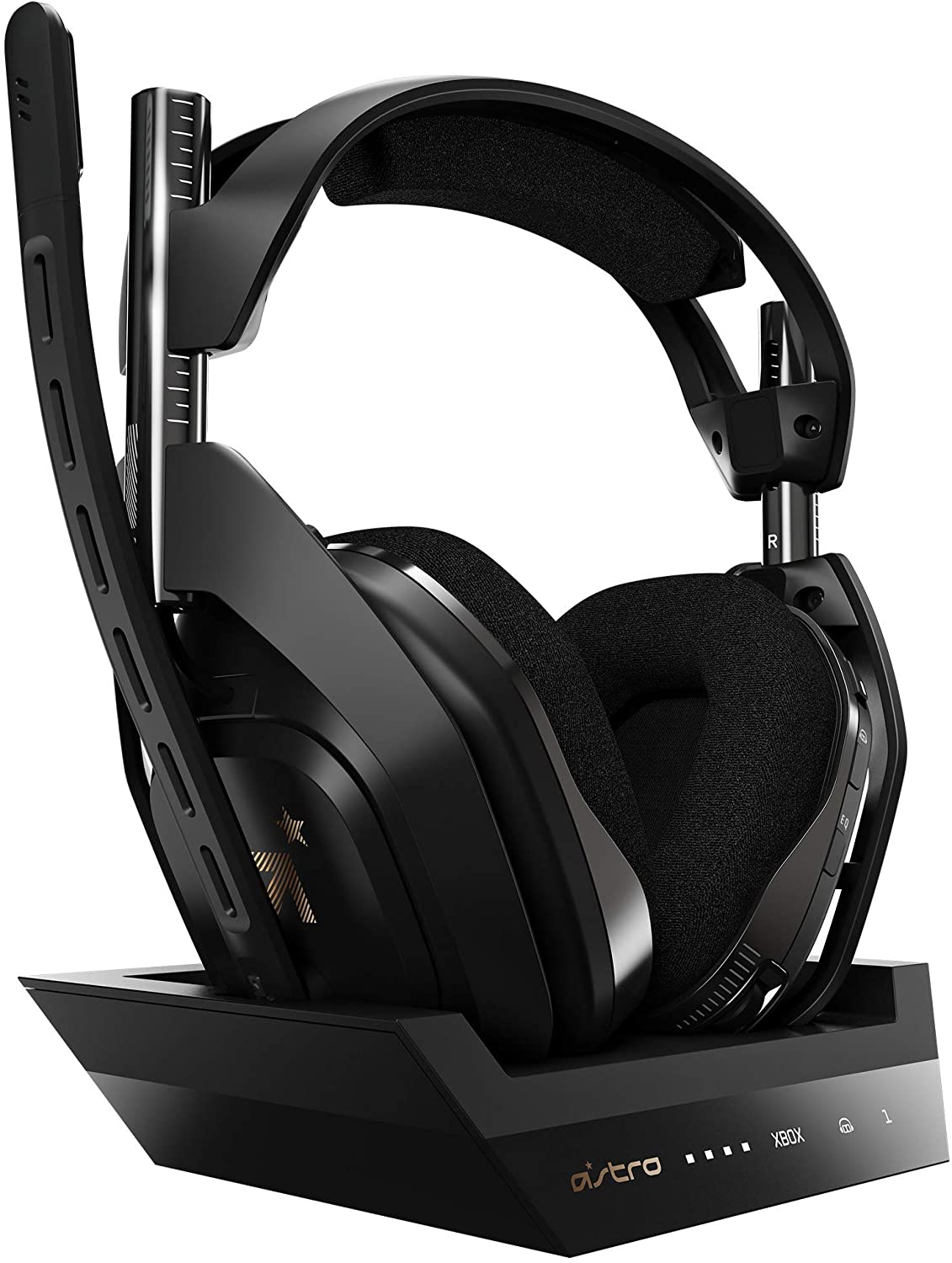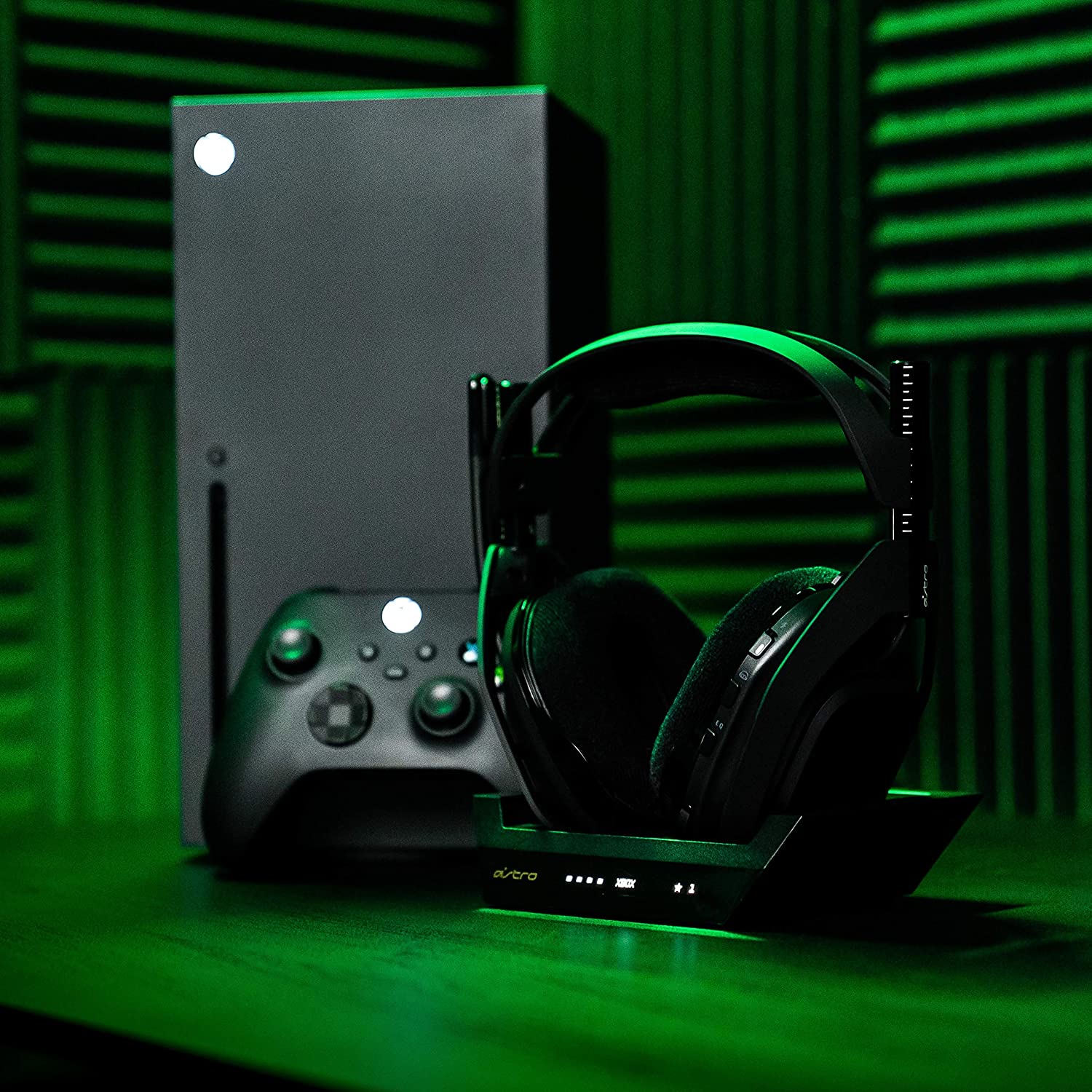Astro A50 Gen 4 review: a quality all-round gaming headset
The latest Astro A50 is a top-notch gaming headset, but with a high price point to match

With its comfortable design, bulletproof wireless connectivity, long battery life and deeply customisable audio, the Astro A50 Gen 4 has a lot going for it. The price is high and you’ll need two if you game on both PlayStation and Xbox, but as a quality all-rounder it’s hard to ignore.
-
+
Good audio quality
-
+
Convenient charging dock
-
+
Lots of audio customisation
-
-
Expensive
-
-
Separate versions for Xbox/PlayStation
Why you can trust T3

If you're shopping for one of the best gaming headsets, and have a high-end shopping budget, then Astro Gaming will have almost certainly come into your consideration. The maker is renowned for producing quality gaming headsets for PS5, Xbox and PC.
And, simply put, the Astro A50 is the firm's flagship gaming headset. As such, if you've got serious money to spend on your next audio upgrade, we feel it has to be considered before pulling the trigger on a purchase.
There are two versions of the Astro A50; one is compatible with PC, Mac and PS4, while the other works with PC, Mac and Xbox One. The latter also works with the new Xbox Series S and Series X consoles, while the PS4 model works with the PlayStation 5 with an HDMI adapter sold by Astro. For this review we are using the headset with an Xbox One X.
As with previous generations of A50, the Gen 4 is a premium gaming headset aimed at the top end of the market. It carries a not-insignificant retail price, but seeks to justify this by offering 15 hours of battery life, a bulletproof wireless connection with its base station/charging dock, Dolby surround sound, and extensive customisation to both audio input and output.
The A50 Gen 4 also features magnetic ear cushions that can easily be replaced if you prefer a leather-like finish.

Astro A50 Gen 4 review: Design and setup
The A50 Gen 4’s design is unapologetically that of a gaming headset. Instead of attempting to blend in with regular headphones, the A50s with their non-detachable microphone arm and chunky cans are clearly for gaming. And while you can watch movies or listen to music with them via your computer or console, they are best suited to their primary purpose.
As such, comfort and adjustability are high on the agenda. The ear cushions are as soft as they are expansive, surrounding your ears without putting undue pressure directly onto them. The headband is equally soft and didn’t cause any discomfort, even during longer gaming sessions. The leather-like finish of Astro’s A50 Mod Kit might offer a more stylish look, but for us the included cushions still felt great, and that’s what matters most.
The headset itself doesn’t fold, but each earphone rotates and can be independently adjusted for height. Line markers on each side help you ensure the earphones are adjusted to exactly the same height, ensuring a perfectly symmetrical fit.
The microphone arm sits on the left side and the mic is automatically muted when the arm is raised. All of the headset’s controls are on the right, with master volume controlled by a scroll wheel, above which you will find a button to cycle three three EQ presets, a button for switching between stereo and Dolby sound, and the power switch.
The outside of the right-hand ear cup has four buttons for adjusting the volume of voice and game audio separately. There is a learning curve here and it takes a couple of gaming sessions to commit the location of every button to muscle memory. Once you have, adjusting audio levels and changing sound modes is easy and helped further by audio cues, like two beeps to confirm the selection of EQ preset two.
The docking station plugs into your console or computer using a USB cable for power and data, or audio can instead be fed through the included optical cable. There’s a switch on the back for flicking between PC and console mode, and an included micro USB cable means you can plug the headset itself into the dock if its battery is dry when you need to use it.
Setup is relatively simple, but we needed to first plug the headset into a computer to update its firmware via the Astro Command Centre app. It’s a shame we couldn’t do this from the Xbox One X, as that also has a version of the Command Centre, used to customise the A50’s audio settings. Once updated and set up, all you ever need to do is place the headset on the dock to charge, then pick it up, flick the power switch, and you’re good to go.

Astro A50 Gen 4 review: Features and audio
As we mentioned earlier, the microphone is activated when lowered to your mouth, then muted when raised. The A50 feeds your voice back to you, which may seem annoying but is so instantaneous that you don’t really notice it while chatting with others.
Astro’s Command Centre app has everything you need for fine-tuning the audio output of the headphones. You can create three distinct EQ setups – one for each of the games you play most often, for example, or one for music and one for movies – and adjust the microphone too.
It is also possible to download entire EQ presets for specific games, tailored to make the A50’s 40mm drivers sound their best and deliver the sound track as accurately as possible, no matter what you are playing.
You can also pick a noise-cancelling mode for the microphone to best suit your environment, from a silent house at night to a loud professional gaming arena. The former does very little to dial out background noise, while the latter attempts to remove as much as possible, so that only your voice comes through to whoever you are gaming with.
We like the amount of customisation on offer here and audiophiles will surely appreciate the EQ settings available. But the trick software can’t overcome the physical limitations of the A50’s pair of 40mm drivers. They are certainly good, but remain a part of a well-rounded package instead of being the sole reason for the high price tag.
While Dolby sound is available on both models of A50, only the Xbox/PC/Mac version works with Dolby Atmos. This elevates game audio to the next level, enveloping your ears in a sphere of sound. It sounds great when enabled, but keen gamers may prefer the simpler stereo option, where sound is faithfully delivered to your left or right instead of being augmented into artificial surround sound.
For games where precise locational audio is less important, we enjoyed the Astro’s Dolby credentials and the Atmos fed to it by our Xbox.
The sound stage of the A50s is wide and detailed, with volume levels impressively loud without distortion. Bass is adequate but doesn’t serve up the skull-rumbling depth you may have hoped for given the price. And, this being a gaming headset and not intended for a peaceful transatlantic flight (remember those?), there is no active noise cancelling.
As we mentioned earlier, the microphone is activated when lowered to your mouth, then muted when raised. The A50 feeds your voice back to you, which may seem annoying but is so instantaneous that you don’t really notice it while chatting with others.

Astro A50 Gen 4 review: Price and verdict
For anyone who currently uses a much cheaper gaming headset and is considering taking their setup to the next level, spending a chunk more will bring you a hugely improved experience. Pricey headsets are wireless for a start, while being more comfortable, customisable, and delivering better sound.
The Astro A50 Gen 4 does all of these things, while offering the flexibility of working with your console as well as a PC or Mac. The charging dock is more compact than that of the third-generation A50, taking up less space on your desk or media unit, while delivering a rock-solid connection and enough range to make all-important trips to the fridge without dropping out.
We like how easily the magnetic ear cushions can be swapped for the optional leather-like ones, but in all honesty we’re happy with what the A50 comes with as standard. Same goes for the headband cushion, and together they provide all the comfort anyone should need for lengthy gaming sessions. The same goes for the battery, which is rated at 15 hours and fills back up when the headset is sat on its magnetic dock.
Astro’s software is expansive but intuitive, making it easy for gaming newbies and professionals alike to tune the audio to their personal taste, and we like being able to have three different EQ presets just a button press away. The automatic muting of the mic when raised is a nice convenience feature and the separation of volume for game and chat is welcome (once you have committed button location to memory).
There is no denying that the Astro A50 Gen 4 retails for an awful lot of money for a gaming headset, and whether you feel that is affordable or not is of course down to you. But we will say that, once you have sampled a high-quality gaming headset with the comfort, convenience and practicality of the Astro A50, it’s hard to go back.
Sign up to the T3 newsletter for smarter living straight to your inbox
Get all the latest news, reviews, deals and buying guides on gorgeous tech, home and active products from the T3 experts
Alistair is a freelance automotive and technology journalist. He has bylines on esteemed sites such as the BBC, Forbes, TechRadar, and of best of all, T3, where he covers topics ranging from classic cars and men's lifestyle, to smart home technology, phones, electric cars, autonomy, Swiss watches, and much more besides. He is an experienced journalist, writing news, features, interviews and product reviews. If that didn't make him busy enough, he is also the co-host of the AutoChat podcast.
-
 Polar’s new subscription feature lands in the shadow of Garmin’s Connect+ rollout
Polar’s new subscription feature lands in the shadow of Garmin’s Connect+ rolloutPR genius or timing disaster? Polar’s new Fitness Programme adds adaptive training to its ecosystem
By Matt Kollat Published
-
 New Orient Star watches offer a glimpse of the magic within
New Orient Star watches offer a glimpse of the magic withinThere are two new skeleton pieces
By Sam Cross Published
-
 Netflix's most surprising 100%-rated sci-fi series returns with gorgeous trailer
Netflix's most surprising 100%-rated sci-fi series returns with gorgeous trailerLove Death + Robots is back for more
By Max Freeman-Mills Published